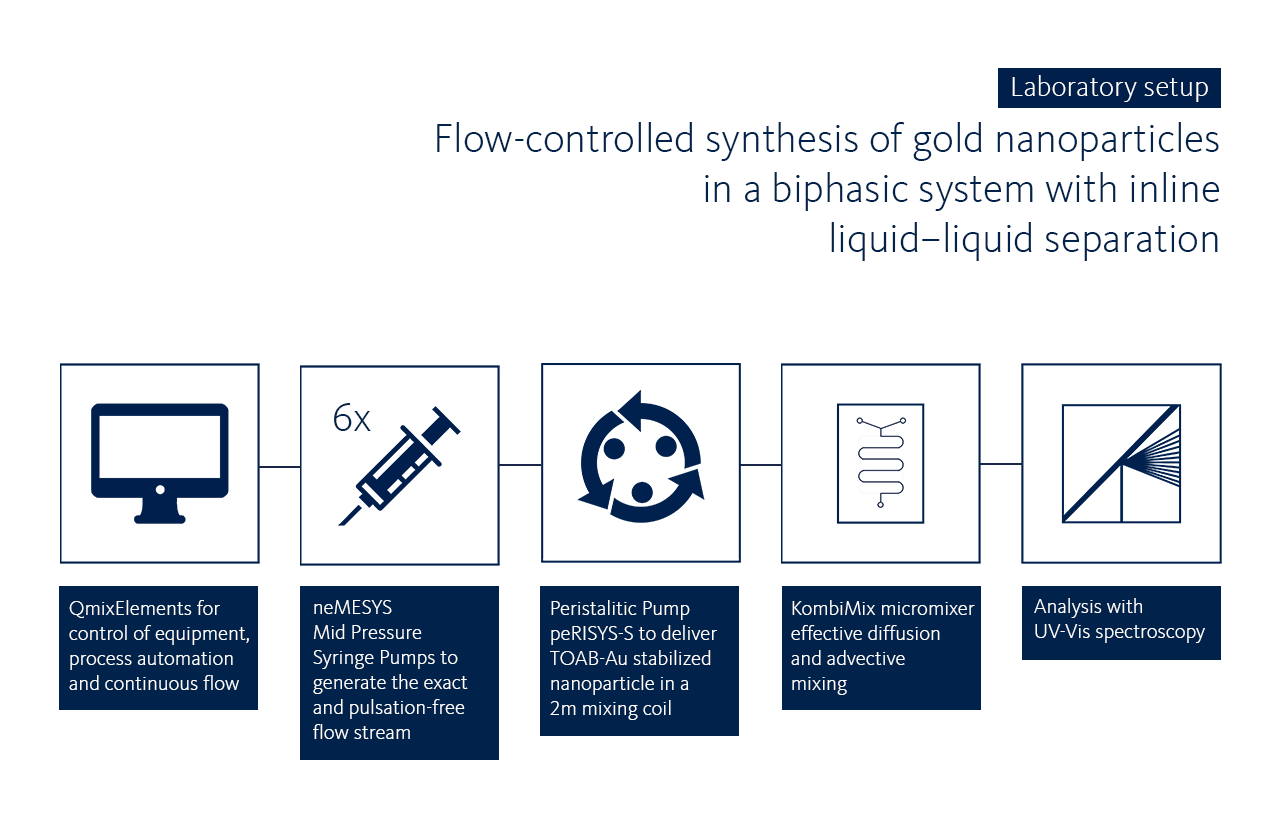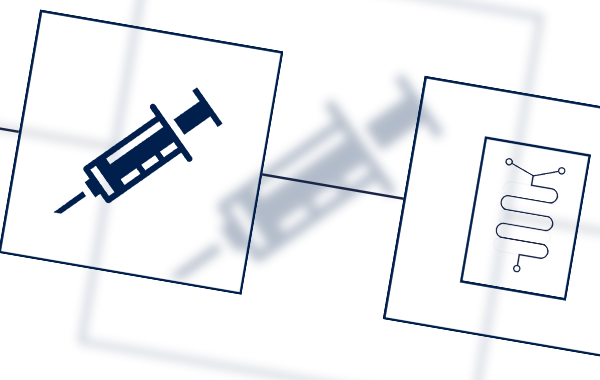Gold nanoparticles have recently become very important in different application fields. The reproducible synthesis of such nanoparticle is quite difficult due to many reaction parameters, which affect the optical and electrical properties of the particles. The size, shape and dispersity can also affect these properties.
Chow et al. In their scientific article Chow et al. report about a new flow-controlled method for the synthesis of gold nanoparticles using a liquid-liquid membrane-based separation technology.
Laboratory Setup
The flow-controlled synthesis of nanoparticles has a lot of convincing advantages. Mainly because of the precise control of the reaction parameters and surrounding conditions, i.e. mixing ratio, residence times and temperatures. Finally, flow-controlled synthesis minimizes batch-to-batch variability while benefitting yield and quality of the gold nanoparticles.
In the article Chow et al. describe a flow-controlled study for the synthesis of DMAP stabilized gold nanoparticles split into 3 synthesis stages. Based on the modular neMESYS syringe pump system and CETONI’s automation software QmixElements, a novel flow setup for the gold nanoparticle synthesis could be realized. A setup of six CETONI neMESYS Mid Pressure syringe pumps were used to generate the exact and pulsation-free flow stream to allow the formation of TOAB-Au stabilized nanoparticles using sodium borohydride as a reducing agent. In addition, a modular peristaltic pump (peRISYS-S, CETONI) was used to deliver three lines of solution for the washing of TOAB-Au stabilized nanoparticles in a 2 m mixing coil. For effective diffusion and advective mixing a glass-silicon split and recombine KombiMix micromixer (CETONI) was used in the third stage.

To separate the organic and aqueous phases a liquid-liquid membrane has been used, too. In order to balance the pressure on both sides for an efficient separation, precise pressure measurements are essential. CETONI’S pressure module QmixP was used to monitor any pressure-build up upstream due to nanoparticle aggregation which may cause a blockage of the T-mixer.
Within the scope of this brilliant research work a liquid-liquid membrane-based separation of gold nanoparticles could be demonstrated for the first time. A versatile and easy-to-use software tool in combination with various off-the-shelf plug and play components (neMESYS syringe pumps, peRISYS-S peristaltic pump, pressure measurement module etc.) from a single source had a decisive influence on the research progresses and success.
Used CETONI devices:
- Base 600
- Syringe pumps: 6x neMESYS Mid Pressure modules 1000N
- Peristaltic pump: 1x peRISYS-S
- Pressure controller: 1x QmixP
- Micromixer: KombiMix
- Software: CETONI Elements (QmixElements)
Literature:
Chow E., Raguse B., Della Gaspera E., Barrow S. J., Hong J., Hubble L. J., Chai R., Cooper J. S., Sosa Pintos A., Flow-controlled synthesis of gold nanoparticles in a biphasic system with inline liquid–liquid separation. React. Chem. Eng., 2020, 5, 356. DOI: 10.1039/c9re00403c






